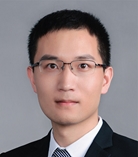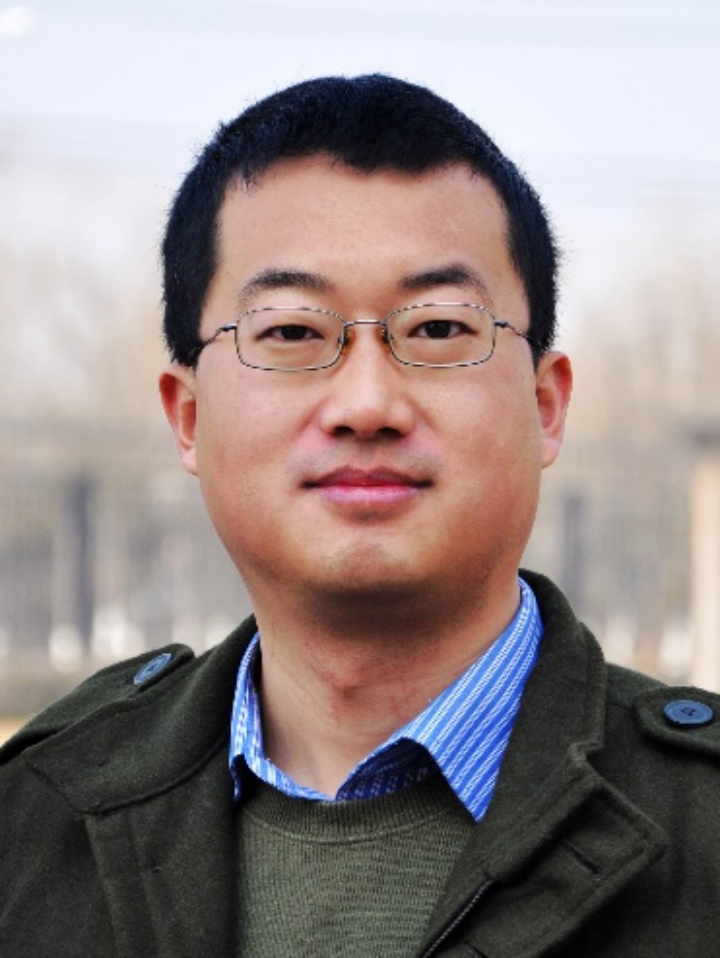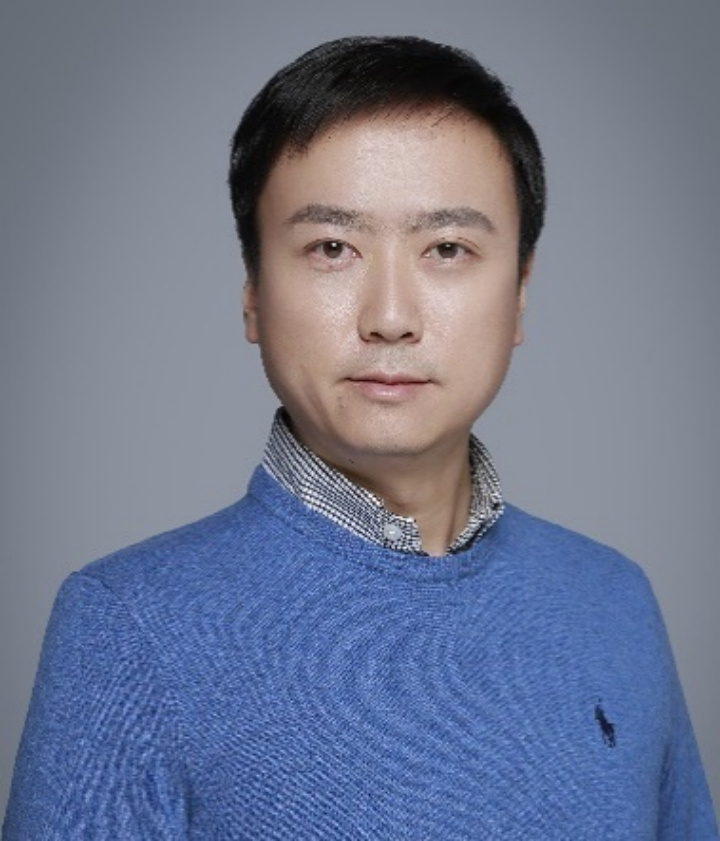组织者 Organizer:包承龙
报告人 Speaker: 贾晓红(中国科学院)
时间 Time:12月31日10:00--11:00
地点 Venue: 双清综合楼C654
报告题目:CAD曲面求交和布尔运算前沿进展
报告摘要:
几何内核是CAD-CAE-CAM设计研发类工业软件的共同几何基座,曲面求交和布尔运算是几何内核中最重要的底层功能,相关算法的拓扑稳定性直接决定了一个CAD系统的稳定性。通过工业标准的NURBS样条曲面之间的裁剪-拼接构成的CAD模型通常具有水密性问题,其根本原因之一是NURBS曲面之间的交线难以准确表示和计算,这也造成了工业流程中从CAD几何设计到CAE物理仿真的衔接困难。曲面求交中的挑战性问题包括:交线拓扑自动判定、交线拓扑图计算、奇点计算、小环检测、重面检测、容差求交、以及基于曲面求交的高精高效模型布尔运算。即使在国际主流几何内核Acis或Parasolid中,曲面求交或布尔运算功能仍然常在两曲面处于临界状态时发生计算错误甚至导致停机。本报告将系统性介绍曲面求交和布尔运算在CAD-CAE-CAM流程中的角色和挑战性问题,并介绍我们在曲面求交和布尔运算上的理论研究进展与软件开发情况。
个人简介:贾晓红,中国科学院数学与系统科学研究院研究员。研究方向为符号计算、计算代数几何、CAD等。主持基金委青年基金A类、B类项目、国家重点研发计划项目、重点研发计划青年科学家项目等。曾获CSIAM应用数学青年科技奖(2020)、全国“几何设计与计算”青年学者奖(2017)、中国科学院三八红旗手(2024)、中创软件人才奖(2025)等。
组织者 Organizer:包承龙
报告人 Speaker: 梁希同(北京大学)
时间 Time:1月5日15:00--16:00
地点 Venue: 双清综合楼B627
报告题目:乌贼和章鱼的智能与仿生
报告摘要:
头足类(包括乌贼和章鱼)的神经系统是无脊椎动物中最复杂的,但与人脑在演化历程和组织结构上又完全不同,因此蕴藏着最丰富而独特的神经算法资源。其中,乌贼通过控制上百万个色素细胞的大小变化,可以瞬间改变全身皮肤的颜色和图案,用以模拟环境隐藏其中。我们使用超高像素相机阵列对自由活动的乌贼的全身进行微米尺度的显微录像,运用计算机视觉和深度学习算法同步追踪体表几十万个色素细胞的动态,发现变色伪装采用一种基于实时视觉反馈的迭代优化算法。同时,我们还发现皮肤能通过感光机制实现对色素细胞的分布式增益控制。这些发现将为伪装仿生学和生成式人工智能提供独特借鉴。此外,章鱼的触手是生物界最为灵活、复杂的运动器官之一。它利用独特的分布式神经系统,整合丰富的感觉输入和反馈信息,实现对极高自由度运动的精准控制,是仿生软体机器人重要的模仿对象。我们通过高精度运动捕捉和三维重建,解析章鱼触手高度复杂运动的神经控制机制,从而启发的仿生软体机器人结构设计和运动控制算法。
个人简介:
梁希同,北京大学生命科学学院、北大-清华生命科学联合中心、北大麦戈文脑科学研究所、北京大学定量生物学中心研究员,博士生导师。本科毕业于北京大学;2018年获美国圣路易斯华盛顿大学博士学位;2019-2022年在德国马普脑科学研究所从事博士后研究。主要研究头足类动物(包括乌贼和章鱼)的行为、智能与仿生,关注动物行为多样性的神经和演化机制,并致力于人工智能技术在行为学研究中的运用和脑启发人工智能研究,代表性成果发表在Nature、Science、Neuron、PNAS等期刊。
组织者 Organizer:包承龙
报告人 Speaker: Ruiyi Yang(Shanghai Jiao Tong University)
时间 Time:12月18日 14:00-15:00
地点 Venue: 双清综合楼C654
Title: Model-free Estimation of Latent Structure via Multiscale Nonparametric Maximum Likelihood
Abstract: Multivariate distributions often carry latent structures that are difficult to identify and estimate, and which better reflect the data generating mechanism than extrinsic structures exhibited simply by the raw data. In this talk, we propose a model-free approach for estimating such latent structures whenever they are present, without assuming they exist a priori. Given an arbitrary density p_0, we construct a multiscale representation of the density and propose data-driven methods for selecting representative models that capture meaningful discrete structure. Our approach uses a nonparametric maximum likelihood estimator to estimate the latent structure at different scales and we further characterize their asymptotic limits. By carrying out such a multiscale analysis, we obtain coarseto-fine structures inherent in the original distribution, which are integrated via a model selection procedure to yield an interpretable discrete representation of it. As an application, we design a clustering algorithm based on the proposed procedure and demonstrate its effectiveness in capturing a wide range of latent structures.
Bio: Ruiyi Yang is an incoming Tenure-Track Associate Professor at the Institute of Natural Sciences at Shanghai Jiao Tong University. He obtained his Ph.D. in 2022 at the University of Chicago, followed by a postdoctoral training at Princeton University. His research interests lie in Bayesian computation and nonparametric statistics in non-Euclidean settings, as well as the mathematial foundations of inverse problems and data science.
Time: Tues., 16:00-17:00, Oct. 7, 2025
Venue: Shuangqing C548
Title: ADAPTING NOISE TO DATA: GENERATIVE FLOWS FROM LEARNED 1D PROCESSES
Speaker: Gabriele Steidl, TU Berlin, Germany
Abstract: We introduce a general framework for constructing generative models using one-dimensional noising processes. Beyond diffusion processes, we outline examples that demonstrate the flexibility of our approach. Motivated by this, we propose a novel frame-work in which the 1D processes themselves are learnable, achieved by parameterizing the noise distribution through quantile functions that adapt to the data. Our construction integrates seamlessly with standard objectives, including Flow Matching and consistency models. Learning quantile-based noise naturally captures heavy tails and compact supports when present. Numerical experiments highlight both the flexibility and the effectiveness of our method.
Joint work with J. Chemseddine, G. Kornhardt, R. Duong, P. Friz.
时间:2025年9月11日,下午16:00-17:00
地点:Shuangqing C654
报告人:Jianyi Yang(Shandong University)
题目:Protein structure prediction meets Cryo-EM
摘要:AI-based methods have revolutionized protein structure prediction, yet significant challenges remain in modeling complex biomolecular assemblies, dynamic conformations, and RNA structures. In this talk, I will present CryoAtom, a novel approach that adapts AI techniques from protein structure prediction to resolve atomic structures from Cryo-EM density maps. CryoAtom is publicly available at: https://github.com/YangLab-SDU/CryoAtom.
Bio: Jianyi Yang is a professor at Shandong University. He has made key contributions to the development of a few widely-used algorithms, such as trRosetta, trRosettaRNA and I-TASSER. Notably, his research group achieved outstanding success, winning the protein structure prediction challenges in both CASP15 (2022) and CASP16 (2024). With over 70 publications and approximately 20,000 citations, his work has had a profound impact on the scientific community.
时间:2025年05月29日 上午9:30-11:30
地点:双清B626
报告人1:邵嗣烘
题目:从平方和到模之和:理论与算法
摘要:现代社会建立于数据之上,数据驱动着世界的发展。数据是离散的,连接这些离散数据的数学模型往往天然具有NP难的特征,例如复杂的组合优化问题,这迫使我们越来越重视离散数学工具的发展。另一方面,相较于离散的研究对象,连续的数学模型往往会呈现更多的结构信息,如凸性、对称性等,进而为产生更丰富的处理手段提高可能。于是一个合理的想法是将离散的基于数据的组合优化问题“嵌入”到连续问题来进行理论和算法的发展。沿着这条思路,传统的连续嵌入尝试往往遵循松弛-凑整的研究路径去讨论收敛性和估计近似比,但这样的分析极不平凡,多需要配合精心设计的凑整策略。即便如此,松弛和凑整这两个模块互相独立导致这种嵌入方式下重构的可行解依旧不够准确。为此,本报告将从多种NP难的图割问题出发来说说如何尝试构建一套离散到连续的准确嵌入方式,进而发展等价的非线性图谱理论和简单连续迭代算法,并通过启发式算法的高质量参考解来进行验证。
简介:邵嗣烘,北京大学博雅特聘教授,主讲《数学分析I-III》,《数学模型》,《高维数值方法》,《组合最优化算法》,《谱方法》和《计算流体力学》等课程。主要开展面向智能、量子和计算的交叉融合研究,落脚点在基础的数学理论和高效的算法设计,强调离散数学结构的设计、分析和应用。具体研究领域包括:高维数值方法、离散建模与组合优化、计算量子力学、图谱理论及算法、微分方程数值解和计算复杂性等。2019年入选北京智源人工智能研究院“智源青年科学家”。2020年获北京大学优秀博士学位论文指导老师。2021年获北京大学黄廷芳/信和青年杰出学者奖。曾获中国计算数学学会优秀青年论文一等奖,北京大学学术类创新奖,宝洁教师奖和北京大学优秀班主任等。
报告人2:Mingtao Xia
题目:A Wasserstein-distance method for reconstructing stochastic differential equations from time-series data with application in uncovering noisy gene regulatory dynamics
摘要:In the talk, I shall introduce our recent work on developing machine-learning-based methods for quantifying intrinsic noise with applications in reconstructing noisy gene regulatory dynamics. I will then discuss how to apply my methods to reconstruct stochastic processes in cellular dynamics such as the Langevin dynamics and Replication Protein A-DNA binding processes.
个人简介:Mingtao Xia is a Courant Instructor/Assistant Professor at New York University and is a tenure-track Assistant Professor at the University of Houston. His research field includes developing novel mathematical models and computational tools with applications in modeling, simulating, and reconstructing noisy single-cell molecular dynamics and cell population dynamics.
时间:4月24日上午11-12点
地点:双清综合楼C548
报告人:刘歆(中国科学院数学与系统科学研究院研究员)
题目:Can Tensor Product Functions Represent High-Dimensional Problems with Antisymmetry Constraints in Polynomial Complexity?
摘要:Tensor product function (TPF) approximations are widely used to solve high-dimensional problems, such as partial differential equations and eigenvalue problems, achieving remarkable accuracy with computational costs that scale linearly with problem dimensions. However, recent studies have highlighted the prohibitively high computational cost of TPFs in quantum many-body problems, even for systems with as few as three particles. A key factor contributing to this challenge is the antisymmetry requirement imposed on the unknown functions.
In this work, we rigorously demonstrate that the minimum number of terms required for a class of TPFs to satisfy exact antisymmetry grows exponentially with the problem dimension. This class includes both traditionally discretized TPFs and those parameterized by neural networks. By establishing a connection between antisymmetric TPFs and their corresponding antisymmetric tensors, we analyze the Canonical Polyadic rank of the latter to derive our results.
Our findings reveal a fundamental incompatibility between antisymmetry and low-rank TPFs in high-dimensional settings. This work provides new insights into the limitations of TPFs and offers guidance for future developments in this area.
简介:刘歆,中国科学院数学与系统科学研究院研究员,博士生导师,计算数学与科学工程计算研究所副所长。
刘歆2004年本科毕业于北京大学数学科学学院;并于2009年在中国科学院数学与系统科学研究院获得博士学位。主要研究方向包括流形优化、分布式优化及其在材料计算、大数据分析和机器学习等领域的应用。刘歆分别于2016年,2021年和2023年获得国家自然科学基金委优秀青年科学基金项目、杰出青年科学基金项目和科技部重点专项的资助。2024年获得中国工业与应用数学学会萧树铁应用数学奖。现担任MPC, JCM, APJOR等国内外期刊编委,《中国科学·数学》(中英文)青年编委,《计算数学》副主编;中国科学院青年创新促进会理事长;中国运筹学会常务理事;中国工业与应用数学会副秘书长,中国数学会计算数学分会常务理事。
时间:15:00-16:00 2025/04/18
地点:双清综合楼C548
报告人:郭玲
题目:Uncertainty Quantification in Scientific Machine Learning via Information Bottleneck
摘要:Neural networks (NNs) are revolutionizing computational paradigms in physics and engineering by offering novel ways to integrate data with mathematical laws. This transformative approach enables the solution of challenging inverse and ill-posed problems that remain intractable for traditional methods. However, quantifying errors and uncertainties in NN-based inference presents unique complexities compared to conventional techniques. In this talk, we introduce a new framework for uncertainty quantification based on the information bottleneck principle (IB-UQ), designed for scientific machine learning tasks such as deep neural regression and neural operator learning. Additionally, we will present a physics-informed extension of IB-UQ for PDE-related problems. The capability of the proposed IB-UQ framework is demonstrated with several numerical examples.
郭玲,上海师范大学数学系教授, 博士生导师。2007年毕业于上海交通大学数学科学学院进入上海师范大学工作,美国布朗大学和普度大学数学系访问学者。主要研究领域为不确定性量化、概率科学计算和深度学习,在应用数学综合权威期刊以及计算数学领域权威期刊发表多篇学术论文,主持承担多项国家级与省部级科研项目。
时间:16:00-17:00 2025/04/18
地点:双清综合楼C548
报告人:闫亮
题目:基于深度学习的偏微分方程反问题求解及其应用
摘要:近年来,基于深度学习和微分方程(PDE)结合的科学机器学习(SciML)方法逐渐成为科学计算领域研究的热点,在科学探究和工程应用的诸多领域得到广泛应用。本报告中,我们在回顾深度学习求解偏微分方程反问题的几种常用框架的基础上,介绍我们在该领域所设计的几种方法,包括自适应算子学习、基于失效信息的PINNs方法以及针对反障碍散射所设计的SRnet框架等。
个人简介:闫亮,东南大学教授、博士生导师。主要从事主要从事不确定性量化、贝叶斯建模与计算、反问题以及科学机器学习的研究。先后主持包括国家自然科学基金重大研究计划培育项目在内的多项课题,在《SIAM J. Sci. Comput.》、《Inverse Problems》、《J. Comput. Phys.》等国内外刊物上发表40多篇学术论文.
报告题目:AdaBB: A Parameter-Free Gradient Method for Convex Optimization
摘要: We propose AdaBB, an adaptive gradient method based on the Barzilai-Borwein stepsize. The algorithm is line-search-free and parameter-free, and essentially provides a convergent variant of the Barzilai-Borwein method for general unconstrained convex optimization. We analyze the ergodic convergence of the objective function value and the convergence of the iterates for solving general unconstrained convex optimization. Compared with existing works along this line of research, our algorithm gives the best lower bounds on the stepsize and the average of the stepsizes. Moreover, we present an extension of the proposed algorithm for solving composite optimization where the objective function is the summation of a smooth function and a nonsmooth function. Our numerical results also demonstrate very promising potential of the proposed algorithms on some representative examples.
报告时间:北京时间11月14日上午11点-12点
#腾讯会议:127-784-846
报告人简介: Shiqian Ma is a professor in Department of Computational Applied Mathematics and Operations Research and Department of Electrical and Computer Engineering at Rice University. He received his PhD in Industrial Engineering and Operations Research from Columbia University. His main research areas are optimization and machine learning. His research is currently supported by ONR and NSF Grants from the DMS, CCF, and ECCS programs. Shiqian received the 2024 INFORMS Computing Society Prize and the 2024 SIAM Review SIGEST Award, among many other awards from both academia and industry. Shiqian is an Associate Editor of Journal of Machine Learning Research, Journal of Scientific Computing, Journal of Optimization Theory and Applications, Pacific Journal of Optimization, and IISE Transactions, a Senior Area Chair of NeurIPS, an Area Chair of ICML, ICLR and AISTATS, and a Senior Program Committee of AAAI. He is a plenary speaker of the Texas Colloquium on Distributed Learning in 2023 and a semi-plenary speaker of the International Conference on Stochastic Programming in 2023. Shiqian is the elected Secretary/Treasurer of the INFORMS Optimization Society in 2023-2025, and is the General Chair of the INFORMS Optimization Society Conference 2024.
报告时间: 2024年10月29日 16:00-17:00
报告题目:Decoding Microscopy Images by Accurate Measurement of Point Spread Functions
地点:双清综合楼C654
报告摘要:The characterization and precise modeling of the point Spread Function (PSF) are essential for many microscopy imaging applications, such as single-molecule localization microscopy (SMLM), adaptive optics, and deconvolution. Traditional PSF modeling methods are usually limited by the complexity of the model, simplifying the physical model and only using a small number of experimental data sets, and cannot fully explore the rich information contained in a large amount of microscopy data. Here, I will present our recent works on data driven PSF modeling using either fluorescent beads or single blinking fluorophores. Particularly, I will introduce a new algorithm to extract a continuous PSF model from pixelated images. By using up sampled PSF model, we showed that we could improve the accuracy of conventional SMLM images and enable large field of view (FOV) super resolution imaging even with limited camera pixels, dramatically reducing the data volume of large FOV imaging.
李依明,研究员
人物简介与CV:李依明,南方科技大学研究员,国家海外高层次人才(青年项目)。2009、2010、2015年分别于上海交通大学、海德堡大学、卡尔斯鲁厄理工学院获得生物医学工程学士、医学物理硕士和生物物理博士学位。2016-2019年受玛丽居里博士后奖学金资助,分别在欧洲分子生物实验室和耶鲁大学任职博士后和访问学者。2019年底入职南方科技大学担任独立PI。研究方向为三维超高分辨显微成像技术及其生物应用。近年来以第一/通讯(含共同)发表多篇高影响力论文,包括Nature Methods(2018,2023,2024),Nature Communications(2022),Science Advances (2024) 等。主持了国自然面上、山东省重点研发计划、深圳市基础研究重点、深圳市医科委前沿探索等多个科研项目。他开发的软件在该领域最负盛名的软件大赛 SMLM 挑战赛中获得第一名。

地点:双清8楼A04
时间:2024年10月23日下午3:00-4:00
Title: CUQI – Computational Uncertainty Quantification for Inverse Problems
Speaker:Per Christian Hansen, Technical University of Denmark
Abstract: Since 2019 we have worked on developing a practical framework for applying uncertainty quantification to inverse problems.
Our work contributes to the basis for UQ studies of a range of linear and nonlinear inverse problems with different priors and noise models. Specifically, building on the Bayesian framework we develop a modeling and computational platform, including an abstraction layer aimed at non-experts, which is implemented in the python software package CUQIpy.
In this talk I highlight some of our results and methods, with examples from X-ray computed tomography (CT). I describe how we handle uncertain projection angles, how we include structural priors tailored to the geometry of the scanned object, and how we use a goal-oriented approach to compute inclusion boundaries and their roughness. I also briefly describe our software package.
This is joint work with all the members of the CUQI project:https://sites.dtu.dk/cuqi The work is supported by a grant from the Villum Foundation.
Short bio: Per Christian Hansen is professor of scientific computing at the Technical University of Denmark (DTU). He received his PhD in 1985 and his Dr. Techn. (“habilitation”) in 1996, both from DTU. He is a SIAM Fellow, and he is currently heading the CUQI research project at DTU, which aims to create a modeling and computational platform to perform uncertainty quantification for inverse problems.
Before starting his professorship in 1996, Prof. Hansen was with Copenhagen University (1985–1988) and the Danish University Computing Center UNI•C (1988–1996). In 1986 he was at Stanford University, supported by a Fulbright grant, and I 1989 he was at UCLA. More recently, in 2020 he was at the National Institute of Informatics in Tokyo, supported by the JSPS.
His specialization is numerical analysis, numerical linear algebra, iterative reconstruction, uncertainty quantification, and computational methods for inverse problems – with applications in computed tomography, image deblurring, and signal analysis.
He is the author/coauthor of 5 books, and he has published 120+ scientific papers and 7 software packages.
时间:2024年10月23日下午4:00-5:00
Speaker: Yiqiu Dong
Title: Sampling Strategies in Sparse Bayesian Inference
Abstract: Regularization is a common tool in variational inverse problems to impose assumptions on the parameters of the problem. One such assumption is sparsity, which is commonly promoted using lasso and total variation-like regularization. Although the solutions to many such regularized inverse problems can be considered as points of maximum probability of well-chosen posterior distributions, samples from these distributions are generally not sparse. In this talk, we present a sampling strategy for an implicitly defined probability distribution that combines the effects of sparsity imposing regularization with Gaussian distributions. It extends the randomize-then-optimize (RTO) method to sampling from implicitly described continuous probability distributions. We study the properties of these regularized distributions, and compare the proposed method with Langevin-based methods, which are often used for sampling high-dimensional densities.
Short bio: Yiqiu Dong was born in 1980 in Shandong, China. She received the B.Sc. degree in mathematics from Yantai University, Yantai, China, in 2002 and the Ph.D. degree in mathematics from Peking University under the supervision by Prof. Shufang Xu and Prof. Raymond Chan (Lingnan University, Hong Kong), Beijing, China, in 2007. She is currently associate professor in the Technical University of Denmark. Her research areas include inverse problem and variational methods, uncertianty quantification, mathematical imaging and optimization methods.
地点:双清综合楼C654
时间:2024年10月10日下午16:00-17:00
=======
TITLE: Low-rank optimization on matrix and tensor varieties
SPEAKER: Bin Gao (AMSS, Chinese Academy of Sciences)
ABSTRACT:
In the realm of tensor optimization, low-rank tensor decomposition, particularly Tucker decomposition, stands as a pivotal technique for reducing the number of parameters and for saving storage. We embark on an exploration of Tucker tensor varieties—the set of tensors with bounded Tucker rank—in which the geometry is notably more intricate than the well-explored geometry of matrix varieties. We give an explicit parametrization of the tangent cone of Tucker tensor varieties and leverage its geometry to develop provable gradient-related line-search methods for optimization on Tucker tensor varieties. The search directions are computed from approximate projections of antigradient onto the tangent cone, which circumvents the calculation of intractable metric projections. To the best of our knowledge, this is the first work concerning geometry and optimization on Tucker tensor varieties. In practice, low-rank tensor optimization suffers from the difficulty of choosing a reliable rank parameter. To this end, we incorporate the established geometry and propose a Tucker rank-adaptive method that is capable of identifying an appropriate rank during iterations while the convergence is also guaranteed. Numerical experiments on tensor completion with synthetic and real-world datasets reveal that the proposed methods are in favor of recovering performance over other state-of-the-art methods. Moreover, the rank-adaptive method performs the best across various rank parameter selections and is indeed able to find an appropriate rank.
=======
个人简介:高斌,中国科学院数学与系统科学研究院计算数学所副研究员。2019年毕业于中国科学院数学与系统科学研究院。曾先后赴比利时、德国从事博士后研究。其主要研究兴趣是矩阵和张量流形上的优化算法。曾获中国科学院院长特别奖、钟家庆数学奖。受到中国科协青托工程、中科院青年百人、基金委海外优青等项目资助。
时间:7月11日下午4-5
地点:双清8楼B06
题目:在原子尺度上看生命:给蛋白和细胞做个CT
报告人:李雪明,副教授,生命科学学院
摘要:
冷冻电子显微学技术,简称冷冻电镜技术,在最近十年取得了一系列的技术突破,被称为“分辨率革命”,实现了对生物大分子复合物的原子或近原子分辨率结构解析。冷冻电镜技术为生物学家提供了在近生理状态下观察生物大分子原子组成结构的最直接方法,促进了对蛋白质大分子机器功能机制的理解,推动了基于结构的药物设计等领域的快速发展。随着AI技术的兴起,冷冻电镜技术为基于AI的蛋白质结构预测和药物设计提供了最直接最精准的实验数据基础。未来的冷冻电镜技术将目标定位于细胞结构及其中原位生物大分子的高分辨率结构,推动从原子分辨率水平上来理解生命的结构基础。冷冻电镜技术是一个多学科交叉的技术,涉及物理、数学、计算机和生物学等多个领域的技术整合。在本次讲座中,我将沿着冷冻电镜技术发展的时间线介绍多学科技术的融合,以及对相关技术的思考和展望。
个人简介:
李雪明,清华大学生命科学学院副教授,博士生导师,曾入选中组部“青年千人”,获香港求是科技基金会“求是杰出青年学者”奖和国家自然科学基金委优秀青年基金资助,中组部“万人计划”青年领军人才。2009年在中科院物理研究所获博士学位,之后赴美国加州大学旧金山分校从事博士后研究。2013年,李雪明在电子计数探测技术和电镜图像漂移修正算法方面的研究工作取得突破,为冷冻电镜技术的“分辨率革命”做出了重大贡献。李雪明也曾是最早的将通用图形处理器GPU引入冷冻电镜领域的研究者。2014年回国后,李雪明引入多项其他领域的先进技术,包括人工智能中的深度学习和电子工程中的粒子滤波算法,还发展了一系列针对蛋白微晶电子衍射结构解析的新技术,为实现自动化和更高分辨率的冷冻电镜结构解析系统奠定了基础。近年来,李雪明实验室的研究逐渐转向细胞的冷冻电子断层三维重构技术及其应用上来,希望能够实现对从组织到完整细胞或细胞器的纳米甚至亚纳米分辨率结构的三维重构,并能够在细胞中直接测定生物大分子的原子分辨率结构以及生物大分子之间的相互作用关系,也有望推动冷冻电镜技术在药物设计及医疗诊断领域中的应用。

时间:7月12日上午10-11
地点:双清8楼B06
报告人:Bin Han (University of Alberta)
Title: Directional (Quasi)-tight Wavelet Framelets for Image Processing
Abstract: Directional representation systems can effectively capture edge singularities for many high-dimensional problems such as image processing. In this talk, we first discuss directional complex tight framelets and their applications to image/video processing. However, constructing compactly supported multivariate tight framelets is known to be a challenging problem because it is linked to sum of squares and factorization of multivariate Laurent polynomials in algebraic geometry. To circumvent this difficulty, next we introduce the notion of quasi-tight framelets, which behaves almost identical to a tight framelet. From an arbitrary compactly supported multivariate refinable function (such as refinable box splines) with a general dilation matrix, we constructively prove that we can always derive a directional compactly supported quasi-tight framelet with vanishing moments. Moreover, any 1D wavelets or framelets can be adapted into bounded intervals. Consequently, their tensor products can avoid the boundary effects and can be applied to many problems such as manifold data processing and spherical data processing
Short bio: Bin Han is a professor in the Department of Mathematical and Statistical Sciences at the University of Alberta. He got his bachelor's degree from Fudan University in 1991, a master's degree from the Institute of Mathematics, Academia Sinica in 1994, and his Ph.D. from the University of Alberta in 1998. His research interests include computational mathematics, applied and computational harmonic analysis, and signal and image processing. He has published over 100 papers in various top journals in applied mathematics and serves on the editorial boards of several journals, such as Applied and Computational Harmonic Analysis and the Journal of Approximation Theory.
Title: Amnesia Effects in Complex Light Scattering
Speaker:Qihang Zhang (Tsinghua University)
Time:7月4日(周四)下午4-5
Venue:双清综合楼627
Abstract: Disordered media, such as fog, powder, emulsion, and biological tissue, induce complex distortion of light, resulting in intricate speckle patterns. The memory effect, a key speckle correlation, reveals the translational invariance of the scattered field for thin-layer media. The memory effect aids in understanding, manipulating, and reconstructing the field, forming the basis of applications such as imaging through turbid materials, complex beam shaping, and surface characterization. However, neglecting decorrelation in the memory effect becomes a bottleneck in these applications, particularly in the multi-scattering regime. In this work, we report an "amnesia effect" in complex scattering systems, which provides an analytical formula for speckle decorrelation under general conditions. The amnesia effect predicts that the decorrelation of back-scattered light is a linear combination of decorrelations from thin-layer scattering and volumetric scattering. This model achieves state-of-the-art accuracy even for strong and multi-scattering cases, potentially providing an advanced forward model for various inverse problems. As a proof-of-concept, we present two examples, model-based particle size estimation and reconstruction of the incident beam profile, to validate this improvement. Our conclusions incorporate a wide range of systems—however thin-layer, multi-layer or bulk materials—and apply to all complex wave scattering problems.
Bio: Qihang Zhang is currently a postdoc at Tsinghua University. He got his bachelor’s degree from the physics department of Tsinghua University in 2018 and got his Ph.D. from MIT electrical engineering and computer science department in 2023. He works on computational optics and develops novel approaches to combine machine learning and physical systems in different scenarios. His works were published in Nature Communications, Optics Letters. Some related work was also reported by MIT News.
时间:6月20日 下午 16:00-17:00
地点:双清综合楼654
题目:深度学习超分辨显微镜技术开发与应用
主讲人:李栋 清华大学生命科学学院
摘要:成像技术一直是推动生物医学领域发展的重要驱动力。在众多成像技术中,光学显微镜是唯一能够在活体条件下对任意蛋白分子进行连续追踪的技术方法。近年来,以超分辨显微镜为代表的技术进步,开启了在更高时空精度研究生命活动的大门。但需要注意的是,在对活体生物样品进行连续成像时,许多超分辨成像技术依然面临严重的局限和挑战。这是因为得到超分辨图像往往需要较高的激发光功率和较长的图像采集时间。这些因素都会造成超分辨活细胞成像性能的显著下降。本报告将介绍李栋课题组针对上述问题开展的高时空分辨成像技术研制工作。在显微镜硬件方面:开发了多模态结构光超分辨显微镜,以及晶格光片超分辨显微镜系统,集成了TIRF-SIM、GI-SIM、Nonlinear-SIM、3D-SIM等在内的多种成像模式,实现了在活细胞条件下对多种生物过程进行高速、多色、长时程超分辨成像;在超分辨图像重建软件方面:提出了傅立叶域注意力机制的特征图提取方法,以此开发了傅立叶域注意力卷积神经网络,以及合理化深度学习超分辨成像等技术方法,能够在低信噪比条件下获得与传统超分辨显微镜技术媲美的成像效果,从而显著扩展了传统超分辨显微镜的适用范围。
李栋,清华大学生命科学学院教授;2006年毕业于浙江大学光电信息工程学系,获工学学士学位;2011年毕业于香港科技大学获电子与计算机工程学系,获博士学位;2011-2015年在美国霍华德休斯医学研究所从事超分辨显微镜技术开发的博士后研究。目前,李栋研究员从事光学显微成像技术的开发与生命科学应用研究,特别是开发适于活体、高速、长时程、低损伤的超分辨荧光显微镜成像技术。首创了条纹激活非线性结构光显微镜、掠入射结构光超分辨显微镜,以及合理化深度学习超分辨成像等技术方法。代表性工作发表在Cell、Science、Nature Biotechnology、Nature Methods、Molecular Cell、Developmental Cell等期刊。






